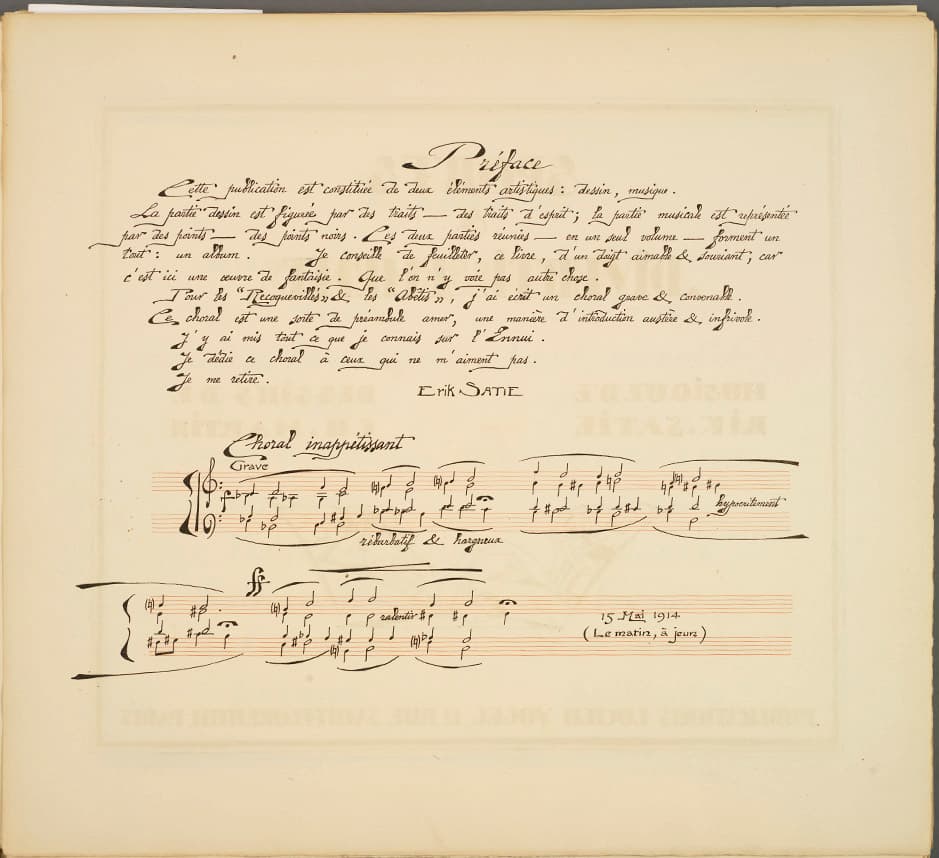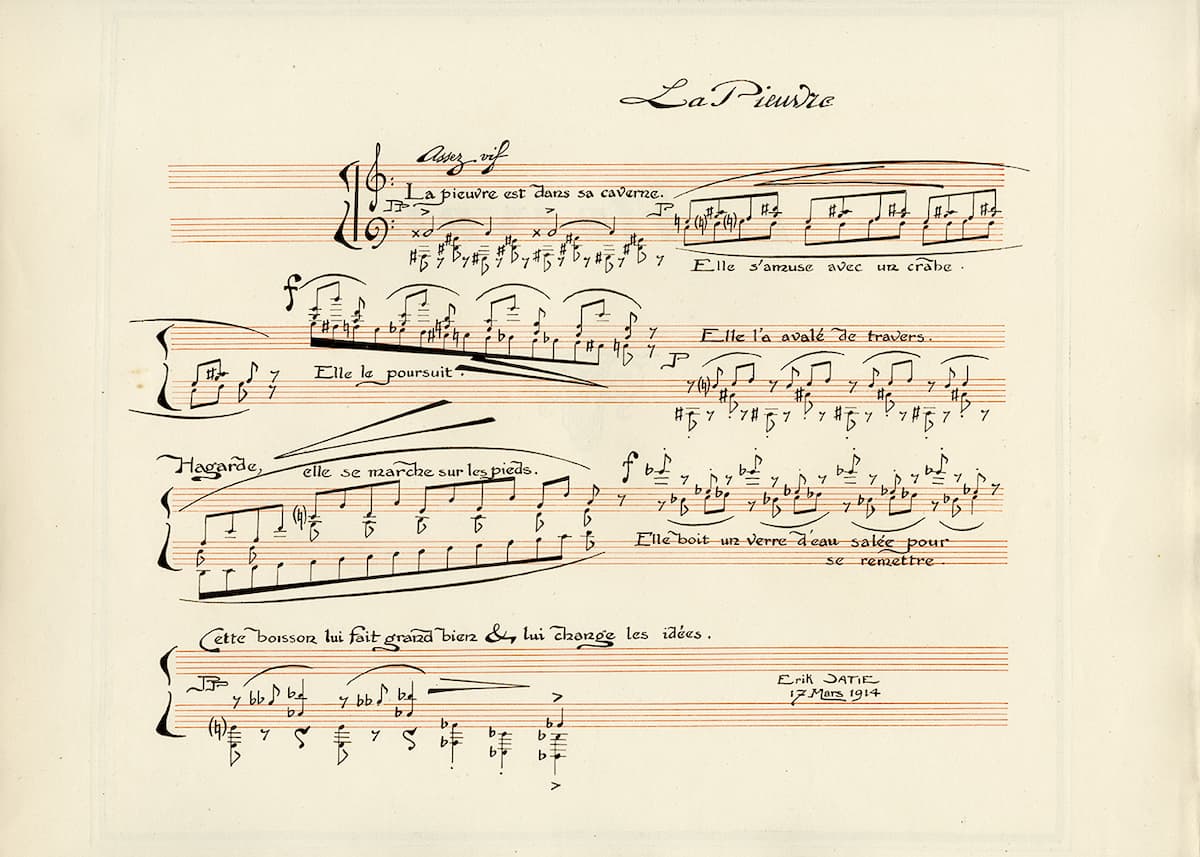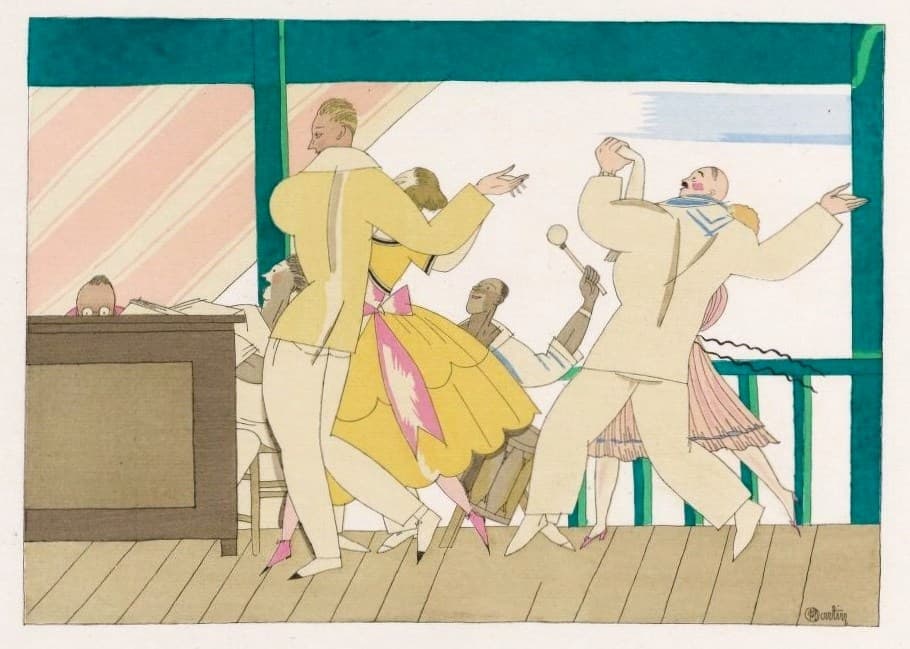2023 happens to be the centenary of the publication of Erik Satie’s Sports et divertissements, a suite of 21 humoristic piano pieces depicting various sports and leisure activities. The music is accompanied by amusing text and corresponding illustrations and is considered to be one of the composer’s finest works (though sadly not performed as often as it should be).

Preface to Sports et divertissements by Erik Satie. Royal Ontario Museum, Rare Book M25 .S27 S7 1923 (Image: ROM2017_15496_2)
Satie was known for his eccentric, avant-garde compositional style. He eschewed bar lines in his music and peppered his scores with aphoristic or enigmatic phrases and directions to the performer. While these may seem bizarre to the audience, for Satie they were integral to his aim of creating sheet music which had equal merit to artistic or literary creations.
Satie often explored various ways of integrating high art and low culture and enjoyed poking fun at highbrow or academic music. Sports et divertissements includes a satirical commentary: in the preface, the composer writes, “For the Dried Up & Stultified I have written a Chorale which is serious & respectable”, and throughout the score, Satie interjects humorous instructions such as “Moderately & with great boredom”.

“Le Pêche”
In fact, the original published score of Sports et divertissements is a fine example of high art. Initiated by fashionable Parisian magazine publisher Lucien Vogel (1886-1954), the project was conceived as an haute couture version of the livre d’artiste (“artist’s book”), a sumptuous, high value collector’s album combining art, literature, and occasionally music, which was popular among French connoisseurs in the years before the First World War.
Vogel worked with one of the era’s most sought-after artists, Charles Martin, to create a portfolio of exquisite Art Deco images to illustrate the musical pieces. These images, rendered with strong geometric shapes and bold colours, the hallmarks of Art Deco style, offer a glimpse into the fashionable and modern post-First War lifestyle and transport the viewer into a world of style and luxury.
The album originally began its production in 1914, but due to the interruption of the war, it was not published until 1923. New illustrations were commissioned from Martin to reflect the time: Paris was now alive with the vibrancy, music, and frivolity of the Jazz Age, and the illustrations perfectly capture the carefree years after the First World War. The score itself is a wonderful, unique merger of music and fashion, with Satie’s distinctly pared-down musical language reflected by Martin’s Cubist style.

Erik Satie’s Sports et divertissements, p. 34
As for the music itself, one of the distinctive features of Sports et divertissements is the way in which Satie uses humour and irony to comment on the various activities he depicts. For example, “Le Golf” begins with a jaunty, rhythmic melody that seems to capture the excitement of the sport. However, as the piece progresses, Satie introduces increasingly complex harmonies and dissonances, as if to suggest the frustration and difficulty that golfers often experience. Similarly, the piece called “Le Yachting” starts out with a tranquil, watery motif that evokes the peacefulness of sailing, but then becomes increasingly choppy and turbulent, as if to suggest the dangers and challenges of the sport.
Erik Satie: Sports et divertissements (Jan Kaspersen, piano)

“Le Tango”
Another notable aspect of Sports et divertissements is the way in which Satie incorporates different musical styles and techniques into the various pieces. “Le Tango” features a sultry, syncopated rhythm that captures the sensuality of the Argentine dance, while “Le Flirt” features a light, playful melody that seems to mimic the teasing and flirtatious behaviour of its namesake activity.
Overall, Sports et divertissements is a charming and whimsical collection that showcases Satie’s versatility as a composer.
For more of the best in classical music, sign up to our E-Newsletter



